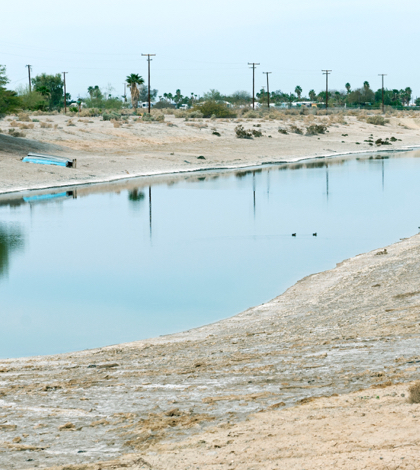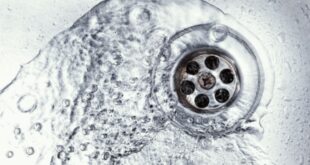The California Natural Resources Agency released a 10-year plan late last week for the receding Salton Sea, specifically targeting the northern and southern ends of the lake. The $383 million plan calls for an anticipated 30,000 acres of exposed, dusty lakebed to be covered by ponds and wetlands that will create habitat for birds as the lake continues to recede and to help in improving the air quality in the surrounding area.
Inflows to the Salton Sea are expected to shrink significantly after 2017, when water transfers from the Imperial Valley accelerate and mitigation water deliveries stop under agreements reached years ago. As the Salton Sea shrinks air quality in Riverside and Imperial counties and surrounding areas will continue to suffer. Particulates, small enough to be dangerous to human health, are picked up from the lakebed and driven by the wind into populated areas. These particulates are part of the reason Imperial County’s children are seen in emergency rooms for asthma at a rate three times higher than the state’s average, according to the Department of Public Health.
Additionally, huge populations of resident and migratory birds are also at risk. The saltier-than-the ocean lakebed is home to fish-eating pelicans and cormorants that depend upon the lakebed tilapia who will no longer be able to survive in the Salton Sea if it grows increasingly salty.
The new plan details the number of acres of lakebed that are expected to face exposure each year from 2018 through 2028, the number of acres to be covered through proposed construction efforts and the projected annual costs of the effort. But the estimated $383 million plan dwarfs the currently available funding of $80 million. However, state, federal, regional, tribal and philanthropic agencies are continuing to seek funding in the effort to protect air quality and wildlife habitat at the sea.
Currently, the state of California has committed more than $80 million in voter-approved bond funds to restore habitat and suppress dust at the lake in the short term. A $14 million grant from the state Wildlife Conservation Board helps to fund habitat conservation at the Salton Sea, and the Salton Sea Authority will administer a $7.5 million U.S. Department of Agriculture grant for water conservation, wetland creation, and air quality mitigation.
Potential sources of future funding include the Water Transfers Joint Powers Authority, created to administer funds involving a 2003 agricultural-to-urban water transfer, and federal agencies and philanthropic organizations. Bruce Wilcox, the state’s assistant secretary for Salton Sea policy, has indicated that a funding plan has been prepared for the state Legislature, and it varies annually from $20 million to $40 million over the course of the next 10 years.
Governor Jerry Brown created a Salton Sea Task Force in May 2015 and directed the multiple agencies to develop a comprehensive management plan for the Sea that will meet both short-term and medium-term goals. The Governor’s goal includes habitat and dust suppression projects of 9,000 acres to 12,000 acres short-term and medium-term plans for 18,000 acres to 25,000 acres. The state’s 10-year plan describes the first phase of the Salton Sea Management Program created under the Governor’s direction.
“Under this plan, we’ll build the backbone infrastructure we need to limit airborne dust and create lower-salinity zones that sustain tilapia,” said California Secretary for Natural Resources John Laird. “We are committed not only to getting started quickly on these projects, but also to learning as we go and adjusting so that our future work is as efficient and effective as possible.”
The plan targets areas near where the New and Alamo rivers carry farm drainage into the southern end of the Salton Sea and where the Whitewater River flows into the northern end of the roughly 35-mile-long lake. The proposal includes building a series of river outlets and ponds along the lake shore so river and lake water can be blended for use in wildlife habitat zones that also will serve to suppress dust. Dry-land dust suppression projects will be intermixed with the river outlets and ponds where habitat rehabilitation is not feasible in order to further protect air quality.
Partnering with the Salton Sea Authority for the new plan are Imperial County, the Imperial Irrigation District, the South Coast Air Quality Management District, the Water Transfers Joint Powers Authority, the Audubon Society, Coachella Valley Water District, San Diego County Water Authority and the U.S. Bureau of Reclamation.
 California Water News Daily Your Source For Water News in California
California Water News Daily Your Source For Water News in California


